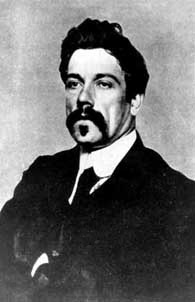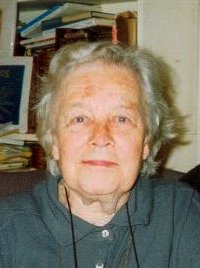Related Research Articles

William Payne Alston was an American philosopher. He is widely considered to be one of the most important epistemologists and philosophers of religion of the twentieth century, and is also known for his work in metaphysics and the philosophy of language. His views on foundationalism, internalism and externalism, speech acts, and the epistemic value of mystical experience, among many other topics, have been very influential. He earned his PhD from the University of Chicago and taught at the University of Michigan, Rutgers University, University of Illinois, and Syracuse University.

William Blake was an English poet, painter, and printmaker. Largely unrecognised during his life, Blake is now considered a seminal figure in the history of the poetry and visual art of the Romantic Age. What he called his "prophetic works" were said by 20th-century critic Northrop Frye to form "what is in proportion to its merits the least read body of poetry in the English language". His visual artistry led 21st-century critic Jonathan Jones to proclaim him "far and away the greatest artist Britain has ever produced". In 2002, Blake was placed at number 38 in the BBC's poll of the 100 Greatest Britons. While he lived in London his entire life, except for three years spent in Felpham, he produced a diverse and symbolically rich collection of works, which embraced the imagination as "the body of God" or "human existence itself".

William Butler Yeats was an Irish poet, dramatist and writer, and one of the foremost figures of 20th-century literature. He was a driving force behind the Irish Literary Revival, and along with Lady Gregory founded the Abbey Theatre, serving as its chief during its early years. He was awarded the 1923 Nobel Prize in Literature, and later served two terms as a Senator of the Irish Free State.

William Wordsworth was an English Romantic poet who, with Samuel Taylor Coleridge, helped to launch the Romantic Age in English literature with their joint publication Lyrical Ballads (1798).
Richard Mant was an English churchman who became a bishop in Ireland. He was a prolific writer, his major work being a History of the Church of Ireland.

Edmund John Millington Synge was an Irish playwright, poet, writer, collector of folklore, and a key figure in the Irish Literary Revival. His best known play The Playboy of the Western World was poorly received, due to its bleak ending, depiction of Irish peasants, and idealisation of parricide, leading to hostile audience reactions and riots in Dublin during its opening run at the Abbey Theatre, which he had co-founded with W. B. Yeats and Lady Gregory. His other major works include In the Shadow of the Glen (1903), Riders to the Sea (1904), The Well of the Saints (1905), and The Tinker's Wedding (1909).

Edward Dowden was an Irish critic, professor, and poet.

Kathleen Jessie Raine was a British poet, critic and scholar, writing in particular on William Blake, W. B. Yeats and Thomas Taylor. Known for her interest in various forms of spirituality, most prominently Platonism and Neoplatonism, she was a founding member of the Temenos Academy.

Edwin John Ellis (1848–1916) was a British poet and illustrator. He is now remembered mostly for the three-volume collection of the works of William Blake he edited with W. B. Yeats. It is now criticised, however, for weak scholarship, and preconceptions.
The Tower is a book of poems by W. B. Yeats, published in 1928. The Tower was Yeats's first major collection as Nobel Laureate after receiving the Nobel Prize in 1923. It is considered to be one of the poet's most influential volumes and was well received by the public.

The Cornell University Press is the university press of Cornell University; currently housed in Sage House, the former residence of Henry William Sage. It was first established in 1869, making it the first university publishing enterprise in the United States, but was inactive from 1884 to 1930.
John Lennard is Professor of British and American Literature at the University of the West Indies (UWI), Mona, Jamaica, and a freelance academic writer and film music composer. Since 2009 he has been an independent scholar in Cambridge and a bye-Fellow of Christ's College, Cambridge.
Nationality words link to articles with information on the nation's poetry or literature.
Nationality words link to articles with information on the nation's poetry or literature.
A Vision: An Explanation of Life Founded upon the Writings of Giraldus and upon Certain Doctrines Attributed to Kusta Ben Luka, privately published in 1925, is a book-length study of various philosophical, historical, astrological, and poetic topics by the Irish poet William Butler Yeats. Yeats wrote this work while experimenting with automatic writing with his wife Georgie Hyde-Lees. It serves as a meditation on the relationships between imagination, history, and the occult. A Vision has been compared to Eureka: A Prose Poem, the final major work of Edgar Allan Poe.
Diarmuid and Grania is a play in poetic prose co-written by George Moore and W. B. Yeats in 1901, with incidental music by the English composer Edward Elgar.

Michael O'Neill was an English poet and scholar, specialising in the Romantic period and post-war poetry. He published four volumes of original poetry; his academic writing was praised as "beautifully and lucidly written".

Peter Bell: A Tale in Verse is a long narrative poem by William Wordsworth, written in 1798, but not published until 1819.

Isabella Fenwick was a 19th-century British amanuensis (secretary), and a confidante, advisor, and friend of William Wordsworth and his family in his later years. She is the scribe behind the Fenwick Notes, an autobiographical and poetic commentary Wordsworth dictated to her over a six-month period between January and June 1843. Her friendship inspired Wordsworth to write "On a Portrait of I.F., painted by Margaret Gillies" and "To I.F."—a sonnet in which he calls her "The star which comes at close of day to shine," a reference to their bond formed late in life.
References
- ↑ Gill, Stephen Charles (2003). The Cambridge companion to Wordsworth. Cambridge University Press. p. 22. ISBN 978-0-521-64681-9 . Retrieved 15 September 2010.